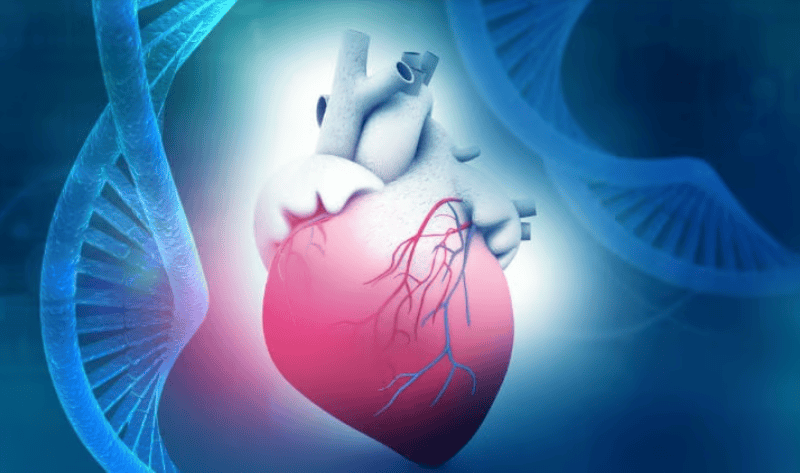Hypertrophic cardiomyopathy, or HCM, is a common but potentially lethal heart disease. While researchers have tried for decades to understand the contribution of the many genes linked to the condition, challenges and inefficiencies around growing heart muscle cells with only specific mutations—and no others that could cloud results—has hampered progress.
Now, the Allen Institute for Cell Science has taken a step toward solving the problem with six new pluripotent stem cell lines, each of which has a different key gene mutation found in HCM. The cells are the result of a joint effort between the Allen Institute, the University of Washington, the University of California, Santa Barbara and Stanford University. They’re the first “disease-specific” cell line collection offered by the institution.
“The unique feature of this collaboration is that we generated multiple different mutations, all on the same very well controlled cell background,” Daniel Bernstein, M.D., a pediatric cardiologist at Stanford who both helped develop the cells and has used them in his own lab, told Fierce Biotech Research. The cells don’t have any other genetic mutations that could cause variations in findings, he explained, meaning they will enable researchers to see clearly how they contribute to disease development.
That solves an issue scientists have run up against in the past when trying to study HCM, which is characterized by thickening of the cardiac muscle that can lead to heart failure and other problems including sudden death. There are as many as 1,500 mutations in 25 different genes that can cause the disease, Bernstein said, but they don’t always manifest the same way. Individuals with the same mutation—even within the same family—can have HCM to varying degrees of severity, a phenomenon called incomplete penetrance.
One of the most common genes involved is MYH7, which encodes a protein called beta-myosin heavy chain 7, or myosin 7. Researchers know that mutations in MYH7 lead to mutated myosin 7 proteins, but what happens next is much murkier.
“Why does a mutation in myosin 7 lead to [HCM]?” Bernstein said. “Understanding that is a good way to develop new drugs or treatments to either prevent this from happening in the first place, or treat it once it occurs.”
The new cell lines are already making that possible. Bernstein’s lab at Stanford used some with a mutation called G256E—a variant that causes some patients, but not all, to develop HCM at varying degrees of severity—to show that the mutation changes the way myosin 7 functions biomechanically and consequently causes the heart muscle to beat too strongly. The results of these experiments were published May 7 in Proceedings of the National Academy of Sciences.
Had the cell line used in the experiment been generated by taking white blood cells from donor patients, reprogramming them into stem cells, and coaxing them into heart muscle cells—one of the means of creating human heart cells for experiments—variations in patient genetics might have made it difficult to compare how the mechanisms of the G256E mutation differ from others that cause HCM. It also would have been expensive to do so at a large enough volume to generate sufficient data.
Instead, “we know that the cells from the Allen Institute were generated exactly the same way,” Bernstein said. “It’s very highly controlled, which allows us to compare seven or eight mutations across the board for the first time.”
“I can look for commonalities between what [the mutations] do to the protein and heart muscle cells,” he added. “That will tell me what the features of the mutations are that lead to the disease, versus what features have little effect on the disease itself.”
By helping scientists make generalizations about the disease by unearthing the common denominator between mutations, the cells could ultimately lead to more personalized treatment approaches. The first FDA-approved drug for HCM, mavacamten (Bristol Myers Squibb’s Camzyos), is meant to treat all patients with the disease. It may turn out that there are some patients who benefit from the drug more than others based on what genetic mutation they have.
“That’s something that you can either do by trial and error in patient studies, or you can do by studying these mutations in cells,” Bernstein said.

